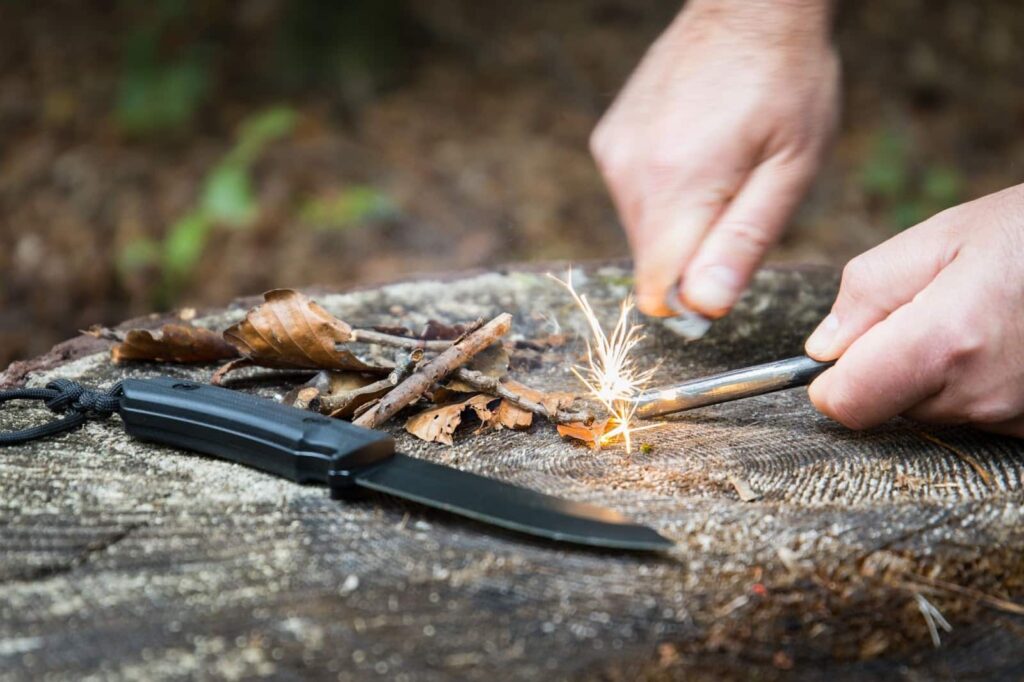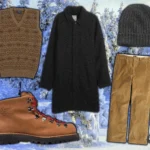(Because Waiting for Rescue Is a Fool’s Game)
Let me say this upfront—in a real survival situation, no one is coming to save you. Not your government. Not your neighbor. Not that overpriced “tactical” gear you saw in a late-night infomercial. When the system breaks—and it will—the only thing standing between you and the dirt is what you know and how fast you can use it.
So here’s the deal: you need more than a bug-out bag and wishful thinking. You need practical, tested, no-BS survival techniques that have kept people alive for centuries—before GPS, before 911, before society got soft.
And while everyone’s playing apocalypse dress-up, you’ll be the one actually ready. These are the skills that don’t just look good in a survival manual—they save lives when things turn real.
1. Fire Is Life—Learn to Make It Anywhere
If you can’t start a fire in the rain, in the wind, or when your fingers are shaking from cold, you’re a liability to yourself. Fire isn’t just warmth—it’s sterilization, food, protection, and morale all wrapped into one. Practice with ferro rods, waterproof matches, and even bow drills. You should know how to ignite tinder soaked in dew and keep that flame alive through the night.
Most people don’t realize how fast hypothermia sets in—even in 50-degree weather. Don’t wait until you’re shivering in the woods to figure it out. Learn now, while you still have time to fail without consequence.
Master the rhythm of fire-building in all environments—wet forest, dry scrub, windy mountain ridge. Know your tinder types: fatwood, birch bark, dryer lint sealed in a straw. The more you know, the less you’ll panic when everything’s damp and your hands are numb.
And don’t just stop at starting a fire. Learn how to maintain it, bank it overnight, and even cook without turning yourself into a beacon. Fire’s a gift—but used wrong, it’s a flare saying, “Hey, come rob me.”
2. Water: Find It, Filter It, Don’t Die
You can last weeks without food. Without water? Three days, max. That’s if you’re lucky. Learning to locate water in dry environments—following animal tracks, using condensation traps, or harvesting dew—is a skill most folks overlook. Big mistake.
And once you find it? Don’t just gulp it down. Untreated water will gut you from the inside faster than a switchblade. Know how to boil, filter with charcoal, or at the very least, make a crude sand and gravel filtration system. Nature doesn’t care if you get diarrhea—it’ll just make you weaker, slower, and easier to take out.
You should know what water looks like in unlikely places. Tree crotches, root hollows, under dense foliage. Even certain vines and plants can be tapped. And if you’re near civilization, check gutters, old wells, and rusted machinery—sometimes survival water doesn’t come in streams.
Just as important: conserve what you’ve got. Sweat is survival currency. Travel during cooler hours, build shade, and ration effort. If you’ve got water but don’t have sense, you’ll lose both fast.
3. Know How to Tie Knots (Not the Cute Kind)
You think rope skills are optional? Tell that to the guy hanging off a cliff or trying to rig a tarp in 30mph winds. One knot separates competence from catastrophe.
If there’s one knot every prepper, hiker, or would-be survivor should know, it’s the bowline knot. It creates a secure, non-slip loop that won’t tighten under pressure. Lifesaving in rescue situations, securing shelter, or climbing gear. Want to learn how to tie it—and use it right? This guide breaks it down better than any scout manual ever did.
But don’t stop at the bowline. You need a knot for every task—taut-line for adjustable tension, clove hitch for anchoring, trucker’s hitch for load securing. A tangled mess of paracord in a high-stress situation isn’t “resourceful”—it’s dangerous.
Practice your knots in the dark. With gloves. With wet rope. With cold fingers. Because if you only know how to tie them while watching a YouTube video in your living room, you don’t really know them.
4. Shelter: Build or Freeze
You ever try to sleep through freezing wind in an open field with nothing but hope? Yeah, doesn’t work. Exposure kills more people in survival situations than wild animals or injuries combined. You need to know how to build fast, efficient, and low-profile shelter with what’s around you—branches, leaves, tarps, or even snow.
Forget the fancy folding tents and Instagram-ready hammocks. If your setup can’t handle wind, rain, or a sudden temperature drop, you’re one bad night away from becoming a cautionary tale.
Master the A-frame. Learn debris huts, lean-tos, even snow caves. Know which direction to face your shelter to block prevailing winds. Get your insulation off the ground—cold earth pulls heat out of your body like a magnet.
And don’t forget concealment. You may want your shelter seen… or not. In certain collapse scenarios, keeping a low profile could mean staying alive. Shelter should protect you from more than just weather.
5. Self-Defense Isn’t Paranoia—It’s Preparedness
When things go sideways, the worst in people comes out. That means you better know how to defend yourself and your group. Whether it’s with a knife, a makeshift spear, or your bare hands, self-defense isn’t about being macho—it’s about staying alive when civility collapses.
And don’t assume it’ll be a fair fight. Practice situational awareness, ambush avoidance, and improvised weaponry. The people who make it through chaos aren’t the strongest—they’re the ones who saw it coming.
Get real training. Not fantasy kung-fu from the internet—real, scenario-based drills. Focus on target zones, force escalation, and what to do when things go loud in the dark. Your brain is your first weapon. Keep it sharp.
Also, teach those around you. One prepared person in a group of five is a soft target. But five trained minds? That’s a defensive unit. And in the aftermath of a breakdown, that might be the difference between community and casualty.
6. Don’t Wait. Train Dirty Now.
You think stress is high now? Try starting a fire when your fingers are frozen and your stomach’s been empty for 48 hours. Real survival isn’t clean. It’s not sanitized or staged. Train in the rain, at night, in the cold. Get your boots muddy. Sleep outside without a sleeping bag. Make discomfort your training partner.
Why? Because your life won’t be on the line when it’s sunny and calm. It’ll be when the storm hits—and you’re all that’s left.
Get used to hunger. To silence. To fatigue. Simulate the mental strain. Go on 12-hour hikes with nothing but a knife and a canteen. Find your limits now—before life pushes you past them.
Stop waiting for “the right weekend” to practice. Go now. Train tired, train cold, train annoyed. If you want survival to be second nature, you have to live it before you need it.
Final Word: Stop Relying on the Grid
The system that feeds, shelters, and medicates you is brittle. Don’t let the illusion of safety lull you into apathy. Every skill you don’t learn is a vulnerability. Every shortcut you take now could cost you everything later.
Instead of stockpiling fear, start stockpiling skill. Real survival isn’t about hoarding supplies—it’s about building ability. And trust me: when the lights go out, the guy who can tie a bowline, purify water, and build a windproof shelter with a hatchet will eat better, sleep warmer, and stay alive.
So pick one of these techniques. Learn it today. Then pick another. Because when the grid dies, your knowledge becomes your currency—and ignorance becomes fatal.






